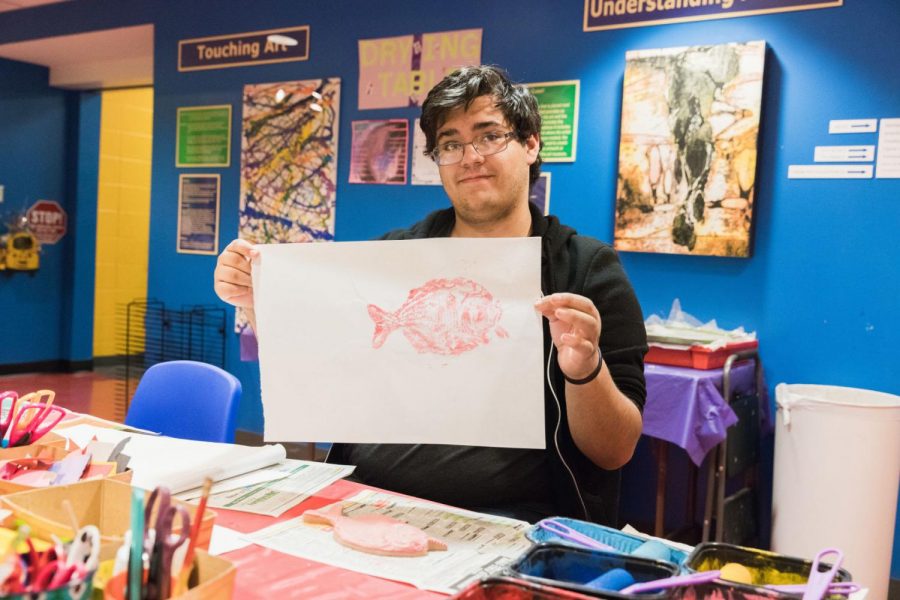ArtLab brings an ancient practice to campus
January 26, 2019
Gyotaku features Asian printing artworks from the Mulvane’s Permanent Collection. People can have hands-on experience of Gyotaku in the ArtLab at Garvey Fine Arts Center.
Kandis Barker, curator of education at the Mulvane Art Museum, has worked closely with the project.
“That process, whether it’s started in Japan or China, has been debatable, because they share tradition, and now it’s really big in Hawaii to do it,” said Barker.
Gyotaku reflects part of Japanese history. Developed more than a century ago, it’s the ancient Japanese art of fish printing, developed as a method of documentation, which was fishermen’s method of recording the size of the fish they caught.
“What’s cool about it is that it shows more of a global idea than just a single culture idea,” said Barker.
At the time, fishermen used freshly caught fish and coated them with ink and covered with a piece of rice paper or newsprint. The paper was smoothed down and removed to create a copy of the fish, which is called monoprint. Using this technique, they could record their catch and show patterns and textures of the scales.
Over time, fish printing evolved into an art form that is still practiced today, and it’s very popular. A skilled Gyotaku artist can create beautiful images that catch subtle details and textures.
Gyotaku is how art and science meet in this Japanese tradition. In Japanese, “gyo” means fish and “taku” means rubbing.
In the ArtLab, students, faculty and community members can experience making a Gyotaku fish printing by themselves. The ArtLab has fish models to use, and people can use brayer and acrylic paint, as ink, to coat the fish. During this process, people will examine the fish and learn the names.
“It’s pretty fun for how easy it is,” said Errick Guzman, sophomore history major with emphasis in education.
A couple of students in the ArtLab help those who come there to make the Gyotaku fish printing. Guzman is one of them. He knows the historical and cultural knowledge of Gyotaku, and he explains it to people when making the fish printing.
Anyone is welcome to to visit Sifting Perspectives, an exhibition featuring Asian artworks from the Mulvane’s Permanent Collection. Then try your hand at Gyotaku in the ArtLab. It is open during the Mulvane Art Museum hours, 10 a.m. to 7 p.m. Tuesday, 10 a.m. to 5 p.m. from Wednesday to Friday and 1 p.m. to 4 p.m. Saturday.



